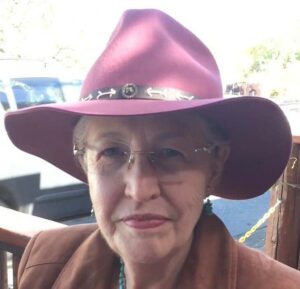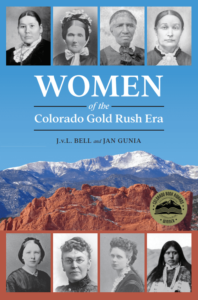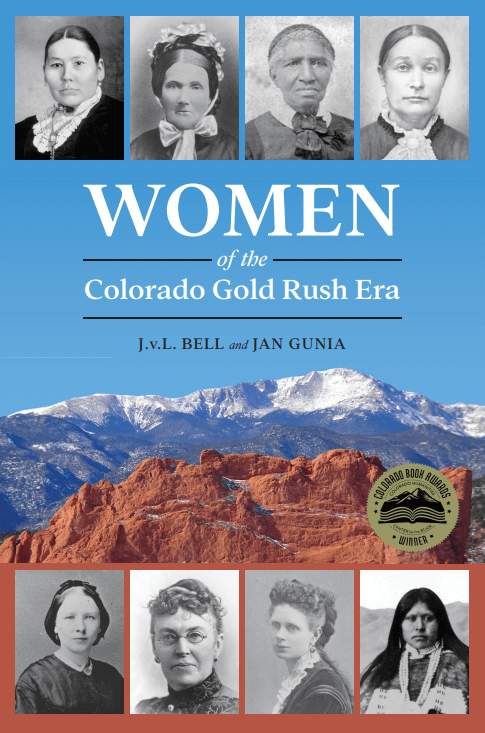Digging for history
Authors honor women of the Colorado Gold Rush era through deep research
Authors honor women of the Colorado Gold Rush era through deep research
The history of the West has long centered around men and their contributions to the building of the country, but amazing and largely unknown women played their parts as well. Authors J.v.L. Bell and Jan Gunia, both Colorado authors with a passion for history, spent years researching a diverse group of female pioneers and early residents via newspaper articles, diary entries, letters and other resources. It wasn’t easy, as they ran up against a dearth of information on the women themselves, while finding plenty about their husbands, fathers and sons. They pushed through, traveling the state (and beyond), digging until they found worthwhile snippets that allowed them to piece together the lives of these remarkable women, resulting in the Colorado Book Award-winning history, Women of the Colorado Gold Rush Era.

Jan Gunia

J.v.L. Bell
Bell and Gunia have compiled the stories of ten women: Amache Prowers, Clara Brown, Albina Washburn, Katrina Murat, Mary Hall, Maria Dolores Ballejos, Augusta Tabor, Elizabeth Byers and Tsashin. Of these women, two are Native American: Prowers (Cheyenne) and Tsashin (Ute); one is African American (Brown); and one is Hispanic (Ballejos). Several of the women were immigrants from other countries (Spain, Germany, and Ireland) and one was born a slave. Their backgrounds varied widely, but they all made their way to Colorado before 1860 and persevered through the hardships wrought from forging a life in an untamed land.
The Colorado wilderness was the great equalizer. No matter the background of the women in these pages, there was no real status to start with in Colorado. Rich and poor all ended up in simple, hand-built homes, fighting the elements to feed and clothe themselves and others. Some of them rose to an elevated status, with one claiming to be a countess, while others ended up being moved out of state to reservations or relying on the kindness of strangers in their final years. But each of these women defied the odds and did great things, even if history doesn’t typically acknowledge their contributions. Their cleverness is evident in these pages, as well as determination and deep strength. Not one of these women ever gave up, always pushing on through drought, flood, fire and encroachment. They found ways out of poverty, at times despite their husbands’ philandering, gambling and bad choices.
With a few of these women, even years of research put in by the authors left mysteries and holes in their backgrounds. Their stories often still manage to revolve around what their husbands did, leaving them as supporting characters in their own stories. While this persistent gap in recorded American history disappoints, it’s clear these authors put in great care to ensure the women whose lives they honored didn’t continue to be forgotten. Bell and Gunia used their knowledge of Colorado pioneer times to fill in gaps, describing how things might have been during an unknown period or element in a particular woman’s life. All in all, they’ve provided more information on a handful of the forgotten women of Colorado than we’ve had before, shedding new light on our state’s history as a result. The authors also did a wonderful job finding photos of the women, their families, settlements, old maps and other ephemera.
whose lives they honored didn’t continue to be forgotten. Bell and Gunia used their knowledge of Colorado pioneer times to fill in gaps, describing how things might have been during an unknown period or element in a particular woman’s life. All in all, they’ve provided more information on a handful of the forgotten women of Colorado than we’ve had before, shedding new light on our state’s history as a result. The authors also did a wonderful job finding photos of the women, their families, settlements, old maps and other ephemera.
Women of the Colorado Gold Rush Era is a great resource and an interesting read for history buffs, especially those interested in how Colorado went from being a wilderness to a territory to a state. Through these women, we find out about early newspapers, the origins of several cities, the gold rush, homesteading, stagecoach stops, salt mining, the making and breaking of treaties, the differences between Spanish/Mexican law and territorial law and more.
We gain insights into what it was like to be a Native American woman in a constantly changing landscape, and the skirmishes between invading settlers and the first residents. We see a woman rise above her beginnings as a slave to become a successful property owner. We experience what it was like to have no rights, but to find workarounds and fight as suffragettes to make things better for modern day women.
Most of all, we see the quiet strength of women in rough situations, frequently alone amid groups, even towns, full of men. This book shows how women brought civilization, however that word is defined, to the West, whether as female settlers or early inhabitants who already lived here and fought to keep their people safe against often uncaring, entitled invaders.
Women of the Colorado Gold Rush Era is a worthwhile read by two Colorado authors—a retired mechanical engineer and a journalist. It’s an illuminating book with some surprises and plenty of fascinating details. Success in the gold rush era was frequently only temporary and easily lost. Circumstances were rough, as were the lives of those who lived in those times. There’s nothing like reading about the women who fought in those conditions to inspire us to do the same in our difficult, modern times.
A fan of all things fantastical and frightening, Shannon Lawrence writes primarily horror and fantasy. Her short stories can be found in over 60 anthologies and magazines in addition to her horror short story collections. Her nonfiction title, The Business of Short Stories, and debut urban fantasy novel, Myth Stalker: Wendigo Nights, are available now. You can also find her as a co-host of the podcast Mysteries, Monsters, & Mayhem. When she's not writing, she's hiking through the wilds of Colorado and photographing her magnificent surroundings, where, coincidentally, there's always a place to hide a body or birth a monster. Find her at www.thewarriormuse.com.
Click here for more from Shannon Lawrence.

